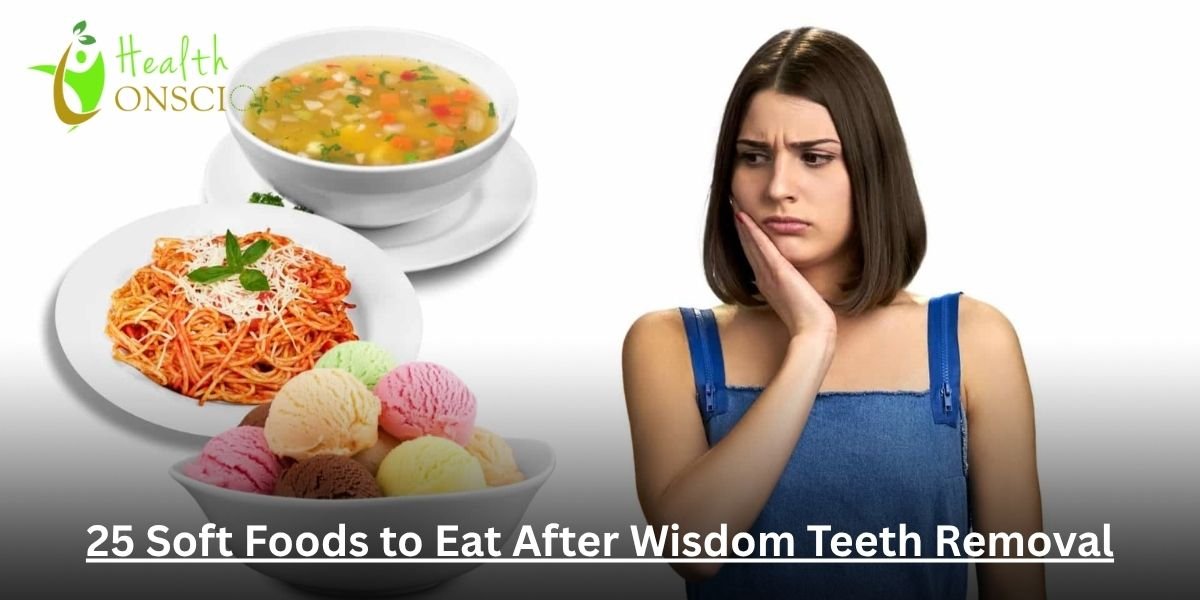Key Takeaways:
- Focus on soft, non-chewy foods immediately after wisdom teeth removal.
- Avoid hot, crunchy, spicy, acidic, or sticky foods to prevent complications.
- Proper hydration is crucial for a smooth and fast recovery.
- Gradually reintroduce harder foods only when comfortable and pain-free.
- Watch for signs of complications like increased pain or swelling, and contact your dentist.
- Follow your oral surgeon’s specific post-operative instructions for optimal healing.
Introduction
Getting your wisdom teeth removed is a common procedure, but what you eat afterward plays a huge role in how smoothly and quickly you recover. The right diet not only prevents pain and complications but also provides the nutrients your body needs to heal. This guide will walk you through safe and comfortable eating options, ensuring you get the nourishment you need without disturbing the surgical sites. Let’s explore the best soft foods to help you bounce back quickly.
What to Eat After Wisdom Teeth Removal?
Immediately after wisdom teeth removal, your diet should focus on very soft, non-chewy foods to protect the delicate blood clots forming in the extraction sites. These clots are crucial for healing and preventing complications like dry socket. Aim for foods that require little to no chewing and can be consumed easily without irritating your mouth. As you start feeling better over time, you can slowly begin adding soft foods with a bit more texture. Prioritizing proper nutrition, even with a limited diet, will significantly aid your recovery process.
25 Foods to Eat After Wisdom Teeth Removal
Proper nutrition for wound healing supports tissue repair and reduces infection risk, a principle equally vital following oral procedures like wisdom teeth removal. Here’s a comprehensive list of 25 soft foods to eat after wisdom teeth removal, prioritized for your easiest consumption post-procedure:
- Water: Staying properly hydrated is absolutely essential for healing. Drink cool or lukewarm water regularly during the day to help cleanse your mouth and aid the body’s healing process.
- Clear Broths: Opt for lukewarm chicken, beef, or vegetable broths. These are excellent for hydration, provide essential electrolytes, and offer initial nourishment without any solid pieces that could irritate your extraction sites.
- Smoothies and Shakes: Blend soft fruits like bananas and cooked berries (ensure no seeds!), with yogurt, milk, or protein powder. Smoothies offer a great way to get extra nutrients without the need for chewing. However, avoid using a straw to reduce the risk of dry socket.
- Yogurt: Smooth and creamy, plain or Greek yogurt is not only easy to swallow but also offers a good source of protein and calcium, both vital for tissue repair and bone health. The chilled temperature can help provide a calming effect.
- Mashed Potatoes: This classic comfort food is soft, filling, and provides much-needed carbohydrates for energy during your recovery. Prepare them with milk or broth to achieve a very smooth consistency, and allow them to cool to a lukewarm temperature before eating.
- Applesauce: A simple and naturally soft food, applesauce is packed with vitamins and requires no chewing. Opt for unsweetened options to prevent added sugars that may irritate.
- Pudding: A soft, smooth, and comforting option, pudding is incredibly easy to consume and can offer a gentle source of calories during your recovery.
- Jell-O (Gelatin): Easy to swallow and hydrating, Jell-O can be a refreshing treat that provides fluids without irritating the surgical site.
- Cottage Cheese: This soft, mild cheese offers an excellent source of protein and calcium, making it a valuable food to aid in muscle and tissue repair. The soft consistency is kind to sensitive or healing gums.
- Scrambled Eggs: Cook eggs until they are very soft and fluffy. These are an excellent source of high-quality protein, which is crucial for wound healing and immune function. Always ensure they are cooled to a lukewarm temperature.
- Oatmeal (Well-Cooked): Prepare regular rolled or quick oats thoroughly until very soft and mushy. Oatmeal provides sustained energy and fiber, but make sure there are no chunky pieces or seeds that could irritate the surgical site.
- Cream of Wheat/Grits: These hot cereals have a smooth texture, are simple to swallow, and offer a soothing energy source. Like oatmeal, ensure they are cooked thoroughly and served at a lukewarm temperature.
- Pureed Soups (Creamy): Blend your favorite vegetable or cream-based soups to a completely smooth, lump-free consistency. These offer hydration and can be packed with nutrients; just remember to let them cool.
- Pureed Fruits: Cook and puree soft fruits like peaches, pears, or ripe melons until silky smooth. These are a great way to get vitamins and natural sweetness without any chewing effort.
- Pureed Vegetables: Gently cook vegetables such as carrots, sweet potatoes, butternut squash, or green beans, then puree them until smooth. They supply vital nutrients and minerals that help support your recovery.
- Avocado: Naturally soft and creamy, mashed avocado is rich in healthy monounsaturated fats, vitamins K, C, and B vitamins, making it highly nutritious and easy to consume when mashed.
- Hummus: Smooth, creamy hummus offers a good source of plant-based protein and dietary fiber. It can be eaten plain by the spoonful or gently spread onto a very soft, moistened cracker or bread piece.
- Soft Cooked Fish: Flaky, tender fish like cod, tilapia, or salmon (steamed or baked) provides easily digestible lean protein, which is vital for cellular repair. Ensure it’s deboned and mashed thoroughly before eating.
- Tofu (Silken or Soft): An incredibly versatile plant-based protein source, soft tofu is very gentle on the mouth. It can be easily mashed, pureed into smoothies, or gently cooked in broths.
- Refried Beans: Ensure these are thoroughly mashed and smooth, as refried beans offer a good source of fiber and plant-based protein without requiring much chewing.
- Mashed Bananas: Naturally soft and sweet, mashed bananas are effortless to eat and provide quick energy along with potassium and other essential vitamins for overall well-being.
- Smooth Nut Butters: Creamy varieties of peanut, almond, or cashew butter (ensure no crunchy bits!) can be eaten straight from the spoon or mixed into other soft foods for an added boost of calories and protein.
- Soft Cheese: Varieties like cream cheese, ricotta, or even mild, melted mozzarella are easy to consume and add a creamy texture and calcium to your diet.
- Baby Food Purees: Pre-made jarred baby food, including fruit, vegetable, or meat purees, can be a convenient and balanced option for ensuring you receive essential nutrients without any chewing.
- Ice Cream/Sherbet (Plain): A cold, smooth treat can be very soothing for any swelling or discomfort. Opt for plain varieties without nuts, vegan chocolate, or other crunchy add-ins that could irritate the surgical site.
Foods and Drinks to Avoid After Wisdom Teeth Removal
Steering clear of specific foods and beverages is equally important as choosing the right ones. The wrong choices can disturb the protective blood clot, cause infection, or irritate the surgical area, potentially resulting in dry socket.
Here’s what to avoid:
- Hard, Crunchy, or Chewy Foods: Items like chips, nuts, popcorn, hard candies, raw veggies, tough meats, and crusty bread may become lodged in the socket or place stress on the jaw.
- Sticky Foods: Sticky treats such as caramel, gum, or chewy candies can stick to stitches or disturb blood clots.
- Spicy and Acidic Foods: Citrus fruits, tomatoes, hot sauces, and spicy dishes can irritate the open wounds, causing pain and inflammation.
- Hot Foods and Drinks: Very hot liquids or foods can dissolve blood clots and increase bleeding. Let everything cool to lukewarm.
- Fizzy Drinks: Sodas, sparkling water, or any carbonated beverages can dislodge blood clots due to their carbonation.
- Alcohol: Avoid alcohol for at least 24-48 hours, as it can interfere with healing and interact with pain medications.
- Using Straws: Drinking through a straw may disturb the healing clot and result in dry socket. Avoid using straws for a full week.
- Smoking: Tobacco use greatly increases the likelihood of infection and developing dry socket. It constricts blood vessels, impairing healing.
When Can You Start Eating Hard Foods?
Knowing when to eat harder foods after a tooth extraction varies. A general guide helps you recover safely. For the initial 24 to 48 hours, stick to liquids and very soft foods. Doing so helps safeguard the vital blood clot, which plays a key role in effective healing.
Over the first few days after this, slowly add more textured soft foods. Avoid anything hard, crunchy, or sticky. Most people can return to a normal diet within about one week. This depends on your healing and pain levels. Always listen to your body. If eating becomes uncomfortable, return to softer foods. Use the unaffected side of your mouth for chewing to avoid disturbing the healing area. To heal properly, be sure to follow all post-operative instructions given by your oral surgeon or dentist.
Other Recovery Tips to Follow After Wisdom Teeth Removal
In addition to your diet, various other steps are essential for a smooth and comfortable recovery after wisdom teeth removal:
- Pain Management: Take prescribed pain medication as directed. Non-prescription painkillers such as ibuprofen can also be effective in easing discomfort.
- Swelling Reduction: Apply ice packs to the outside of your face for 15-20 minutes at a time, especially during the first 24-48 hours, to minimize swelling.
- Rest: Get plenty of rest. Refrain from intense physical exertion for 24 to 48 hours, as it may worsen swelling and bleeding.
- Oral Hygiene: Gently rinse with warm salt water (1/2 teaspoon salt in 8 ounces of warm water) after meals and before bed, starting 24 hours after surgery. Avoid vigorous rinsing. Brush your teeth with care while keeping away from the site of surgery.
- Head Elevation: Keep your head elevated with pillows while resting or sleeping to help reduce swelling.
- Avoid Touching the Site: Don’t touch the extraction site with your tongue or fingers.
Portion Control Guide After Wisdom Teeth Removal
Maintaining adequate nutrition is important, but post-surgery discomfort can make eating a challenge. Portion control becomes naturally easier as you’ll likely feel full faster or experience discomfort with larger quantities.
- Smaller, More Frequent Meals: Choose several small meals during the day rather than having just three large ones. This reduces the effort required for eating at one time and ensures a steady intake of nutrients.
- Listen to Your Body: Only eat when you feel hungry and stop when you feel satisfied. Don’t force yourself to finish a full portion if you’re uncomfortable.
- Focus on Nutrient Density: Since portions may be smaller, make every bite count. Choose foods rich in protein, vitamins, and minerals (like blended soups with vegetables, yogurt, or protein shakes) to support healing.
- Hydration: Continuously sip on fluids. At times, you may confuse thirst with hunger, so staying well-hydrated is crucial for healing.
Dos and Don’ts After Wisdom Teeth Removal
Dos:
- You should stick to soft foods.
- Take your prescribed pain medication exactly as instructed.
- Use cold compresses on your cheeks to reduce any swelling.
- Begin gently rinsing with warm salt water 24 hours after surgery.
- Take adequate rest to support your recovery.
- Keep your head elevated while resting.
Don’ts:
- Do not eat hard, crunchy, sticky, or spicy foods.
- Avoid using straws.
- Refrain from smoking or using tobacco in any form during recovery.
- It is important not to drink alcohol.
- Refrain from spitting or rinsing vigorously.
- Do not engage in strenuous physical activity.
Soft and Healthy Recipes After Wisdom Teeth Removal
Eating soft doesn’t have to mean boring! Here are a few simple, healthy recipes you can easily prepare:
- Creamy Avocado Soup: Blend 1 ripe avocado, 1 cup of vegetable broth (cooled), a squeeze of lime juice, and a pinch of salt until smooth. Serve chilled or at room temperature.
- Berry Banana Smoothie: Combine 1 banana, 1/2 cup mixed berries, 1/2 cup plain yogurt, and 1/4 cup milk or almond milk in a blender. Blend until completely smooth.
- Pumpkin Puree with Cinnamon: Gently heat canned pumpkin puree with a dash of cinnamon and a tiny drizzle of maple syrup for a comforting, nutritious dish. Ensure it’s lukewarm before eating.
- Soft Scrambled Eggs with Cheese: Whisk 2 eggs with a tablespoon of milk, cook gently over low heat until just set and very soft. Stir in a tablespoon of soft cheese (like ricotta) at the end for extra creaminess.
FAQs
What can I eat after wisdom teeth removal?
You can safely consume foods that require little to no chewing—think smoothies without straws, scrambled eggs, pudding, and oatmeal once swelling subsides.
Can I eat noodles after wisdom teeth removal?
Yes, soft noodles like boiled pasta or well-cooked macaroni are generally safe a few days after surgery—just make sure they’re not too hot and don’t require much chewing.
Can I eat ramen after wisdom teeth removal?
Ramen can be eaten as long as the noodles are soft and you avoid spicy seasoning or toppings that might irritate the surgical site.
How to speed up wisdom teeth recovery?
To recover faster, follow your dentist’s aftercare instructions, avoid smoking or straws, rest well, stay hydrated, and eat soft, nutritious foods.



